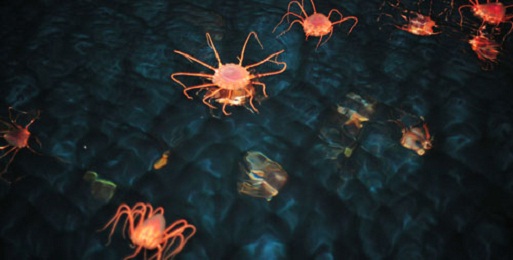Norway Seas Get Darker, Welcome Jellyfish Blooms


Many of Norway's frigid fjords are turning murky thanks to an influx of freshwater, and darker seas could result in fewer fish and more jellyfish, researchers say.
Freshwater flowing from rivers and lakes brings high concentrations of colored organic matter to seawater, making it less salty and more opaque. While scientists believe this has been happening in Norwegian coastal waters gradually over many decades, darkening has increased recently likely due to warming — higher temperatures mean more precipitation, which leads to more murky freshwater flowing out and mixing with the sea.
Darker waters block the light needed for some algae to photosynthesize to make food and grow; the changes in visibility may also hurt predatory fish that rely on sight to find their prey. Meanwhile, tactile predators like jellyfish that depend on collisions to get their meals can flourish in such shadowy conditions, researchers say.
Scientists observed these effects by studying two neighboring fjords on Norway's western coast. Despite their proximity, one, Masfjorden, contains far more seawater than the other, Lurefjorden, and the former still has an ecosystem dominated by fish, while its darker neighbor has been taken over by the jellyfish Periphylla periphylla, the researchers found.
"Periphylla periphylla is a very light-sensitive jellyfish that thrives best in the world's very deep marine waters," researcher Dag L. Aksnes, a marine biologist of the University of Bergen, explained in a statement. "But the water in Lurefjorden has now become so murky and dark that it probably is helping this jellyfish to thrive. At the same time, the fjord has become less hospitable as a habitat for important fish species."
Aksnes added that the fish in Lurefjorden don't lack food.
"On the contrary, the numbers of prey organisms are far higher than in many other fjords," he said. "But since the predatory fish see so poorly in murky water, they are quite simply having difficulty finding enough food. So the jellyfish have practically no competition for the abundant prey organisms."
Get the world’s most fascinating discoveries delivered straight to your inbox.
The researchers say they don't know yet whether this will lead to undesired changes in Norway's coastal ecosystems, but, in any case, the changes will be hard to reverse.
The study is forthcoming in the journal Marine Ecology-Progress Series.
Follow LiveScience on Twitter @livescience. We're also on Facebook & Google+.


